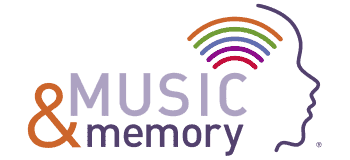 When Wisconsin’s Department of Health Services (DHS) decided to implement Music & Memory’s personalized music program in 100 long-term care facilities in September 2013, officials were hopeful that the initiative would improve residents’ quality of life. But they had no idea just how significant the improvements might be.
When Wisconsin’s Department of Health Services (DHS) decided to implement Music & Memory’s personalized music program in 100 long-term care facilities in September 2013, officials were hopeful that the initiative would improve residents’ quality of life. But they had no idea just how significant the improvements might be.
One year later, the evidence is persuasive: Wisconsin has moved from tenth to fourth place among all 50 states in a national effort to reduce use of antipsychotic drugs in nursing homes. The Music & Memory program is one of the alternatives to medications implemented by Wisconsin nursing homes to reduce unnecessary prescribing of antipsychotic drugs to residents. Before the state’s Music & Memory initiative, across all nursing homes in the second quarter of 2013, 17.4 percent of residents were taking antipsychotics; a year later, use had dropped to 14.6 percent.
According to DHS’s Kevin Coughlin, the 100 nursing homes represent about a quarter of all facilities in Wisconsin. “The initiative is pulling the whole state in a positive direction,” he says. “We were really amazed.”
A Positive Change for Nursing Home Residents
While DHS officials say they can’t yet definitively attribute all of the progress to the Music & Memory program, they believe personalized music has played a significant role in efforts to reduce antipsychotic use and improve residents’ lives.
Research, in partnership with the University of Wisconsin-Milwaukee, is underway to provide a rigorous assessment of program benefits for residents.
Even before the data were published, evidence of the program’s success persuaded DHS Secretary Kitty Rhoades to champion Music & Memory, not only across Wisconsin, but also to her state executive counterparts nationwide. “Touring the facilities that were implementing the program, she was very moved to witness the positive impact on residents,” says Coughlin.
Expanding to Another 150 Care Facilities
Response to Music & Memory at the facility level has been so enthusiastic that DHS is bringing the program to another 150 long-term care facilities this fall. Funding for Music & Memory’s certification program comes from the Centers for Medicare and Medicaid Services (CMS) Civil Monetary Penalties fund, comprised of financial penalties for accreditation shortfalls. Organizations within states can tap those funds for nursing home improvements.
Following Wisconsin’s lead, Ohio and Utah are launching their own statewide Music & Memory initiatives, and other states are expressing significant interest in bringing personalized music to their long-term care facilities.
Wisconsin’s Music & Memory initiative is part of a broader effort, spearheaded by Secretary Rhoades, to become “dementia capable.” Coughlin says DHS priorities include making dementia training programs more affordable and accessible, creating and supporting dementia-friendly communities, improving options for individuals with dementia to live at home, and adapting facility physical environments to needs of those with dementia.
Assisted Living Memory Care Units Following Suit
While the program targets nursing homes, it has had a ripple effect for other long-term care settings in the state. According to John Sauer, president and CEO of LeadingAge Wisconsin, “We’ve seen many members expanding Music & Memory into their assisted living memory care units.” LeadingAge represents non-profit, faith-based and some government long-term care facilities, of which about half were involved in the first phase of the Wisconsin initiative.
The state’s substantive commitment to making personalized music available to long-term care residents means “it’s being woven into the fabric of best practices,” says Tom Hlavacek, executive director of the Alzheimer Association’s Southeastern Wisconsin chapter. “Coming from the state, it’s being taken very seriously.” To help participating facilities expand their programs, his chapter sponsored iPod donations at this fall’s annual Walk to End Alzheimer’s, with collections at each walk site.
Those iPods will help to meet growing demand for the program. While the first round of 100 nursing homes began the Music & Memory initiative with equipment for 15 residents at each site, more than half of the facilities have now expanded their programs to include more residents.
“We’re very serious about person-centered services in long-term care,” says John Sauer. “Music & Memory gives us another tool to walk the walk.”
Founded in 2010, MUSIC & MEMORY® is a non-profit organization that brings personalized music into the lives of the elderly or infirm through digital music technology, vastly improving quality of life.
